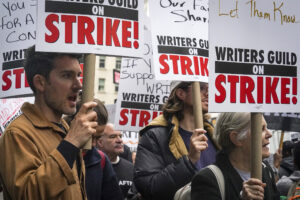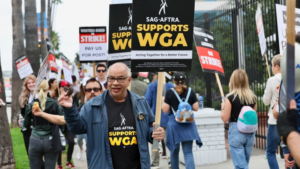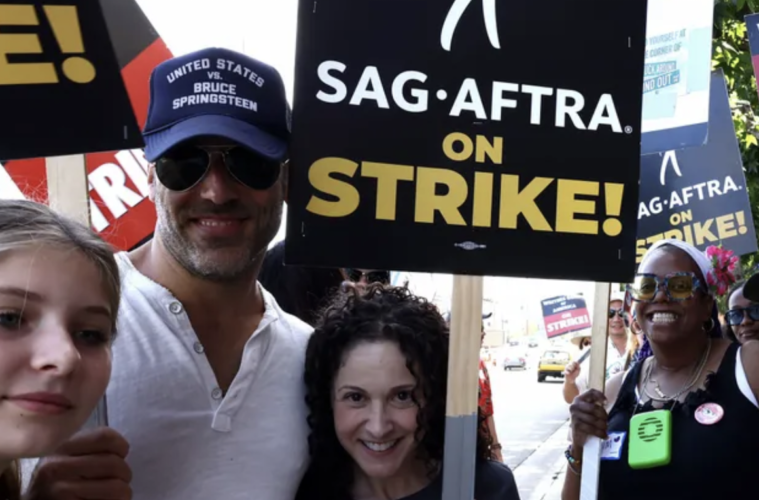HOLR breaks down the updates from the writers and actors strike, two months on.
Two Months after the Board of Directors and the Council of WGA announced the unanimous vote to go on strike, the WGA and SAG-AFTRA are still at a standstill with the AMPTP, as noted here.

Image Credit: AP The Associated Press
Writers and Actors Strike Have a Common Interest
The Writers Guild of America went on strike after failed negotiations with the AMPTP (Alliance of Motion Picture and Television Producers) in May regarding ongoing disputes surrounding fairer work conditions, fair compensation, and job security against the growing use of AI technology. As a result, the Screen Actors Guild-American Federation of Television and Radio Artists joined the writers on strike on July 14 for much the same reasons.

Image Credit: Robin L Marshall/Getty Images
A negotiator for the Writers Guild was quoted as saying that the AMPTP “is looking to dismantle the writers’ room as we know it” (Deadline) by implying that writers aren’t needed at a certain point of production. Is it right for companies to make false claims to justify pay cuts? Is the use of AI, truly a beneficial replacement for the quality and skill of people who continue to learn and grow every day? The answer is no, it isn’t. Is the AMPTP dragging this out? the demands made by the WGA and SAG-AFTRA are not unreasonable. Why shouldn’t writers and actors alike protect their livelihoods? their future prospects? technology should never replace the experience and instinct of a human being.
However, the effect this is having on the economy also cannot be ignored. In a short period of time, the writers’ and actors’ strike has incurred a billion-dollar loss in output, according to an article printed by Deadline.
The writers and actors strike are also shining a light on the payments they receive for their services with many actors sharing their residuals on social media now compared to even just a few years ago and claiming it’s not worth it anymore.
Are streaming services cheating the writers and actors of Hollywood?
Published by HOLR Magazine


